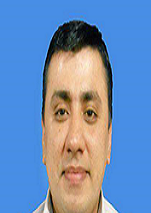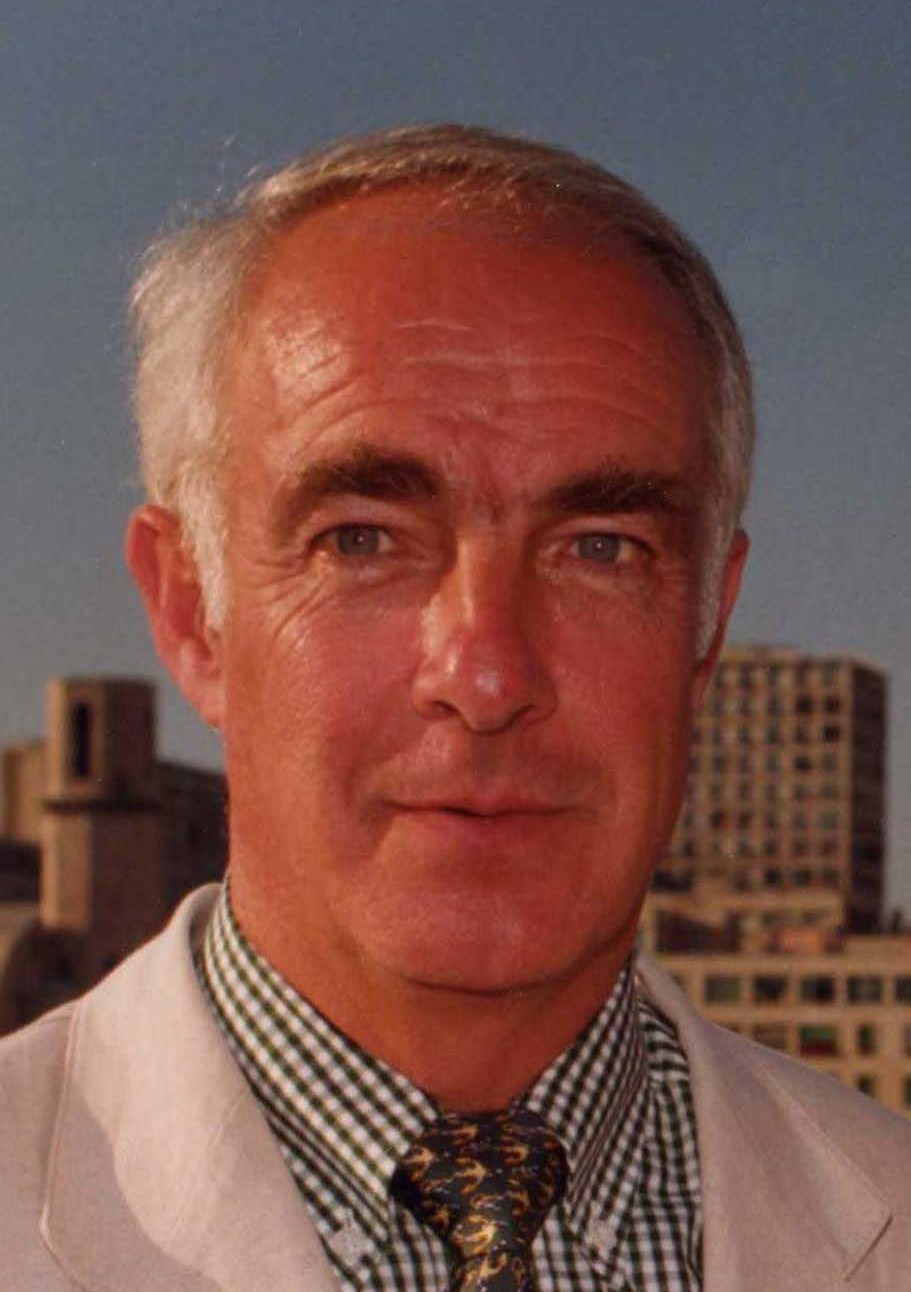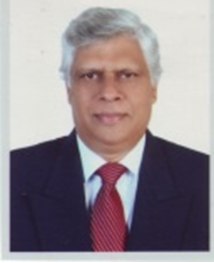Day 1 :
Keynote Forum
AnneMarie Clements
Anne Clements & Associates Pty Ltd, Australia
Keynote: Re-establishing sustainable coastal protection by mimicking natural processes

Biography:
AnneMarie Clements is the Director and a restoration ecologist of Anne Clements & Associates, a group specialising in botanical conservation assessment, as well as developing and implementing optimal conservation strategies. She holds a MSc (Macquarie Univ.) Thesis - The vegetation of bushland in the northern Sydney area and a PhD (Univ. of Sydney) Thesis - The vegetation of the sand masses of the mid-north coast of New South Wales. She has more than 30 years’ experience. Her major research interests include the re-establishment of native ecosystems, impacts of urban development on vegetation and soil, pattern analysis, effects of inundation and salinity on the plant communities, metal concentrations on plant growth and bioaccumulation. She has utilized her research in designing and implementing rehabilitation/conservation programs as part of sustainable developments.
Abstract:
Coasts worldwide are ravaged by major storms. Planning on exposed coasts requires an understanding of the impacts of previous storm events. The approach taken for storm protection in this project was to re-establish native dune ecosystems with their inherent ability to withstand and recover from storms, rather than to construct a rigid engineered seawall. The May-June 1974 storms on the Australian east coast provided an impact benchmark for the likely "1 in 100-year events" for the Magenta Shores project. The calculated storm bite on previously mined Magenta beach dunes was up to 300m3 of sand per linear meter. Mineral sand mining resulted in highly erodible loose quartz sand, 'stabilized' by the South African Chrysanthemoides monilifera subsp. rotundata (bitou bush). These highly degraded coastal ecosystems were on irregular landforms with a reduced occurrence of soil binding fungi and associated native host plants. Regular monitoring showed that colonization occurred in stages, with increases in diversity dependent on the ongoing removal of dense bitou seedlings. The primary colonizing species Spinifex sericeus and development of a fungal network were essential for secondary colonizing species Acacia longifolia subsp. sophorae. Within three years, native species dominated the stabilized dune ecosystems. The dune shape depended on establishing the prostrate primary colonizer Spinifex, and maintaining the shape and sand volume was dependent on the sand grain-trapping mechanisms of the fungal hyphae and their host plants. Overall, the project demonstrated the importance of mimicking natural processes–by allowing windblown sand to form crests and swales parallel to the beach; creating protected fibrous coastal tea-tree windrow microenvironments; burying Spinifex seedheads in the moist sand layer for primary colonization of the reconstructed dune and establishing primary colonizing native vegetation cover and associated fungal hyphae.
Keynote Forum
Miguel De Luque Villa
Universidad de Cundinamarca, Colombia
Keynote: Modeling Escherichia coli die-off rate in submarine outfall systems

Biography:
Miguel De Luque has his expertise in environmental modeling (Water quality, Air Pollution). Has created prediction models to evaluate impacts from anthropogenic projects. Develops environmental studies such as environmental impact assessment and contingency plans. He is currently the director of environmental engineering program at the University of Cundinamarca.
Abstract:
Submarine outfall systems have been presented as a problem solution for domestic wastewater in coastal cities, due to their design facilities and costs. In this study, the application of a mathematical model to predict the effects of the light intensity, salinity and volumetric ratio variables of the mixture of wastewater and seawater in the Escherichia coli (E. coli) die-off rate on the ocean were evaluated. The relationship between the variables mentioned above was established through the MATLAB software, performing laboratory tests established in a rotatable experimental design. Under each combination of factors, the concentration of E. coli was measured at the start of each experiment and every half hour in a total period of two (2) hours using the membrane filtration method of Standard Methods. The results of the tests were statistically analyzed through a stepwise regression, where the mathematical expression was found that allowed to relate the three (3) factors mentioned with the output variable (E. coli die-off rate). This model serves as a tool to predict E. coli die-off rate of any submarine outfall on the planet.
Keynote Forum
Nasir Soomro
Energy Department Government of Sindh, Pakistan
Keynote: Dangers of the Indus River Delta of Arabian Sea, Pakistan
Time : 13:45-14:30

Biography:
Nasir Soomro is Geologist from Pakistan; he is working with the Energy Department, at the Government of Sindh, Pakistan. He has eclectic interests in the field of earth science, arts and literature. He is the author of the book, ‘Peaks and Perils of Life’ (English Poetry).
Abstract:
The intrusion Seawater has been a challenging issue in the Indus River Estuary (IRE) for over the course of time. Hydrological and meteorological observations were examined through eclectic literature to bring about the causes of seawater intrusion in the waterbody. As the matter of fact, seawater intrusion and coastal erosion are causing deteriorating effects on ecosystem besides causing damage to the environment. The Indus Delta is under great vulnerability. The Indus deltaic region is not only threatened by continuing untoward activities in upstream but also by the near sea in the south, due to the impacts of regional weather conditions. Observational results suggest that the seawater intrusion is inching as much as 84 km upstream in the IRE during the dry season. Extensive field investigations and a high-resolution coastal ocean model are urgently needed for future study.
Keynote Forum
Michel Denis
Université d’Aix-Marseille, France
Keynote: Recent advances in the in situ automated high-frequency observation of marine microorganisms at the single cell level to address their spatial-temporal dynamics
Time : 14:30-15:15

Biography:
Michel Denis was recruited at the CNRS in 1969 to develop physics approaches in biology: A study of electron transfer in the mitochondrial respiratory system with the help of various optical, potentiometric and magnetic techniques. He joined the Center of Oceanology of Marseille (COM) in 1985 to apply these approaches to marine microorganisms whose respiratory systems were largely unknown. His activity evolved towards the individual study of marine microorganisms using flow cytometry, an emerging technique in the marine environment at the end of the 1980’s. He thus introduced this approach to COM and trained students in this discipline.
Abstract:
Marine microorganisms play a major role in oceanic biogeochemical processes, both regarding organic matter production, the feeding source of the entire marine food chain and its mineralization. Their large diversity and short cell cycles make them very sensitive to changes in their environment. Their size classes cover 4 orders of magnitude and their diversity encompasses several thousand species. To overcome these difficulties and account correctly for their dynamics in the natural environment in the frame of global change and carbon cycle, it is critical to observe them in situ at an hour timescale and at the single cell level. Similarly, to better apprehend their spatial distribution dynamics, high-frequency observation has to be carried out at submesoscale. Building on the first commercialized automated in situ (Cytosub, Cytobuoy.com, NL), flow cytometer dedicated to phytoplankton, we addressed its dynamics at the hour time scale and its spatial distribution at sub-mesoscale. Our 12-year experience leads to several improvements of the instrument features. For practical reasons, we preferentially used the non-submersible Cytosense on pumped seawater and demonstrated its efficiency when analyzing pumped seawater from a coastal laboratory, a buoy or a ship where the instrument could be remotely controlled providing internet access. In situ, high-frequency observation of phytoplankton was also critical to validate the algorithm (PHYSAT) developed to identify the dominant phytoplankton groups from remote sensing data. To extend this approach to non-photosynthetic microorganisms, we designed and developed (in close collaboration with Cytobuoy), a new instrument (Cytopro) equipped with an automated taining module that is now validated and tested on a cruise. The Cytopro is more focused on analyzing small cells, particularly heterotrophic prokaryotes (at best, every half hour). This advanced technology opens the access to new fields of research requiring in situ high-frequency observation of marine microorganisms.
- Physical Oceanography | Fisheries Oceanography | Marine Geology and GIS Application | Marine Pollution | Marine Ecology | Marine Biology | Marine Chemistry | Coastal Ecology
Location: Dallas

Chair
Michel Denis
Université d’Aix-Marseille, France

Co-Chair
Miguel De Luque Villa
Universidad de Cundinamarca, Colombia
Session Introduction
Seyedabdolhossein (Abdi) Mehvar
University of Twente & IHE Delft Institute for Water Education, The Netherlands
Title: Potential inundation-driven changes in the value of coastal ecosystem services in the Sundarbans region in Bangladesh

Biography:
Seyedabdolhossein (Abdi) Mehvar is from the Netherlands. Abdi graduated with a MSc in ''Coastal Engineering and Port Development'' from IHE Delft in 2014 and now is doing his PhD research with the title of “Quantifying climate change driven environmental losses on coasts’’ in IHE Delft and in the University of Twente in the Netherlands. His research interests include coastal zone management, climate change impacts on coasts, and economic valuation of coastal ecosystems.
Abstract:
Statement of the Problem: The western coast of Bangladesh, and in particular the Sundarbans region, contains one of the largest deltas in the World. The Sundarbans is vulnerable to many natural disasters such as cyclones, storms, and inundation, which will be exacerbated by climate change. This high vulnerability is due to the combination of its geographical location, low-lying nature of the area and high population density. Purpose: The purpose of this study is to estimate the likely changes in the value of coastal ecosystem services of Sundarbans due to the impacts of climate change driven inundation by the year 2100. Methodology & Theoretical Orientation: In this study, we use accepted economic valuation techniques combined with a newly developed scenario-based approach to guestimate the changes in ecosystem services value due to the impacts of possible inundation scenarios.
Findings: The results show that the worst case inundation scenario (caused by 1.77m relative sea level rise) results in a considerable loss of food provision service (up to $24/Ha), compared to the changes in other ecosystem service values such as provision of raw materials, recreation and art services with losses of up to $2.7, $0.36 and $0.005 per Hectare of the wetlands ecosystems.
Conclusion & Significance: Climate change driven inundation is likely to have a high impact on the value of food provision service (fish and marine species) of Sundarbans ecosystems highlighting this service as the most vulnerable ecosystem service that requires the attention of coastal and marine policymakers. The impact of inundation on other ecosystem services is markedly lower in the Sundarbans. Findings of this study may contribute to the sustainable management of the coastal zone in Bangladesh by highlighting the relative impact of climate change driven inundation on a range of coastal ecosystem services provided by the Sundarbans ecosystems.
Shahid Amjad
Institute of Business Management, Pakistan
Title: Recolonization of disturbed marine benthic communities in the Mangrove ecosystem

Biography:
Shahid Amjad Heads the Department of Environment and Energy Management at the Institute of Business Management (IoBM) Karachi. Dr Amjad obtained his PhD from the University of Wales (UK) in Ocean Biology. He also studied Benthic Ecosystems from the University of Oslo. Norway. Dr Amjad Served as Director General with the National Institute of Oceanography Pakistan and was an elected member of the UN International Seabed Authority Jamaica for 5 years. He has served as a visiting faculty with the University of Karachi and the NED University. He was a member of the WWF Scientific Committee, and a recipient of the Gold Medal from the Zoological Society of Pakistan. Dr Amjad imparts training programs and lectures extensively on Marine Environmental issues. He has undertaken several EIA on projects being set up coastal and offshore projects. Dr Amjad represented Pakistan in international conferences. He has over 30 research publications to his credit.
Abstract:
Statement of the Problem: Mangroves ecosystems provide benefits and offer products and services. These benefits and services include Products of Direct Economic value and Products of Natural System (intangible) unrecognized services. Mangroves are well known for their high biological productivity and their consequent importance to the nutrient budget of adjacent coastal waters. Degradation of mangrove would destabilize the economic potential and the livelihood of communities’ which include services and benefits offered by the mangrove ecosystem. Loss of Mangroves in the Indus Delta may threaten the survival of the natural resources and thereby the livelihood of a large number of fishermen. A Marine Ecological Assessment and audit was undertaken by IoBM and EMC experts on a jetty development project site at PQA. The objective was to assess and audit the growth of mangroves, epipelagic fauna and benthic marine invertebrates (MBI) at the completed construction site of a recently constructed trestle at Port Qasim (PQA), where civil works were undertaken on 25 hectares.
Findings: The predominant Mangroves Avicenna marina was removed from the site for developmental activities. Approximately 500 mangroves saplings of Avicenna marina and Rhizophora mucronata were replanted at the two locations. The growth of mangroves, Recolonization of epipelagic fauna and benthic marine invertebrates were monitored for 12 months. The results of the study shows the mean growth height of mangroves sapling Avicenna marina was 119.28 cm and Rhizophora mucronata was 88.98 cm. Rhizophora mucronata shows a slower growth compared to Avicenna marina. Statistical T-test performed on the data collected shows that the growth of Avicenna marina and Rhizophora mucronata have a significant difference in growth (p>0.05) level. The abundance of epipelagic community that comprises of crabs, mudskippers, worms, gastropods, and the interstitial fauna do not differ significantly. T-Test: Two-Sample Assuming Unequal Variances shows p<0.05.
Conclusion & Significance: The Marine Benthic Invertebrates (MBI) are generally sensitive to changes in the mangrove ecosystem. The statistical analysis tool used for abundance evaluation of the disturbed mangrove ecosystem shows a significant difference. The p values calculated were lower than p>0.05. The abundance and biodiversity of MBI’s are good indicators to monitor the health of the coastal mangrove ecosystem.
Darius Ceburnis
National University of Ireland Galway, Ireland
Title: Organic matter cycling in marine environment: Primary versus secondary sources and cloud interactions

Biography:
Darius Ceburnis received PhD degree in Natural Sciences in 1997 from the Institute of Physics, Lithuania and has been working at the National University of Ireland Galway since 2001. Our most significant work on marine aerosols has been recognized by three Nature publications. Another novel idea was developed around carbon isotopes for an unambiguous determination of organic matter origin in atmospheric aerosols which later helped to elucidate organic matter cycling in the marine environment with the recent publication in Nature Scientific Reports. He published around 100 peer-review papers to-date and being among the top 1% of cited authors in the geosciences discipline (Clarivate Analytics) with nearly 2000 total citations in the last decade and have provided critical technical and research support for Mace Head Atmospheric Research Station which has significantly contributed towards the establishing Mace Head infrastructure as the top atmospheric research infrastructure in the world.
Abstract:
The marine aerosol produces haze and cloud layers overlying an immense ocean covering >70% of the Earth’s surface. Small changes even in low-albedo layers superimposing this relatively dark surface can have profound effects on the global radiation budget and climate change. Bursting bubbles at the ocean-surface produce airborne salt-water spray-droplets, in turn, forming climate-cooling marine haze and cloud layers. The reflectance and ultimate cooling effect of these layers can be determined, but the sprays water-uptake properties are modified through entrainment of ocean-surface organic matter into the airborne droplets. Particulate carbonaceous matter (PCM) is a significant contributor to ambient particulate matter originating from intervening sources which contribution is difficult to quantify due to source diversity, chemical complexity of PCM and processes during atmospheric transport. Carbon isotope analysis of stable and radioactive carbon spun out several techniques for identifying the sources and elucidating processes along atmospheric transport due to the unique isotopic signatures. Three principal sources have been quantified in marine North Atlantic air masses using dual carbon isotope analysis. A hypothetical model conceived to describe the sea-to-air transfer of oceanic OM was capable of reproducing stable carbon measurements at Amsterdam Island in the Southern Indian Ocean and subsequently linked ocean biological processes to the primary marine aerosol. The hypothetical model suggested that fresh organic matter readily resulted in organic matter enrichment in sea spray particles and likely contained fresh colloidal and nanogel particulate matter. Our experimental evidence suggested that virus attack on plankton blooms, triggering their demise, releases the organic matter and this organic matter, through aggregation processes, leads to enrichment in sea spray, thus demonstrating an important coupling between virus-driven plankton dynamics, marine productivity and sea spray modification with potentially significant climate impacts.
Hyun-Min Hwang
Texas Southern University, USA
Title: Sediment quality assessment in tidal salt marshes in Northern California, USA: An evaluation of multiple lines of evidence approach

Biography:
Hyun-Min Hwang is an expert in sediment and water quality assessment and environmental monitoring for trace metals and organic pollutants such as PAHs, PCBs, pesticides, flame retardants, phthalates, and pharmaceuticals and personal care products. His specialty is integrating chemical, ecological and toxicological data together to better understand environmental impacts of pollutants. He also conducted many studies for atmospheric and aquatic pollutant source apportionment using a chemical mass balance model. His recent studies include stormwater runoff monitoring and application of best management practices to remove pollutants in stormwater runoff. He has more than 20 years of experience in research, teaching, and student training. He has been directing summer undergraduate research program over the last 5 years.
Abstract:
This study evaluated the efficacy of integrating a traditional sediment quality triad approach with selected sublethal chronic indicators measured in resident species in assessing the quality of sediments in four tidal salt marshes. These included the highly contaminated (Stege Marsh) and relatively clean (China Camp) marshes in San Francisco Bay and two reference marshes in Tomales Bay in California, USA. Two components (toxicity potential of sedimentary contaminants and benthic macroinvertebrate survey) of the sediment quality triads showed significant differences between Stege Marsh and reference marshes. Porewater toxicity test was significantly influenced by natural contaminants such as unionized ammonia. Some sublethal chronic toxicity tests such as apoptotic DNA fragmentation in liver cells of longjaw mudsucker (Gillichthys mirabilis) and embryo abnormality inlined shore crab (Pachygrapsus crassipes) also clearly distinguished contaminated and reference
marshes. The present study demonstrates that additional chronic sublethal responses measured in resident species under field exposure conditions can be readily combined with traditional sediment quality triads for expanded multiple lines of evidence approach. This confirmatory step may be warranted in environments like salt marshes in which positive interferences affect the interpretation of toxicity test data. Integration of the portfolio of responses in resident species can support a more comprehensive and informative sediment quality assessment in salt marshes and possibly other habitat types as well.
